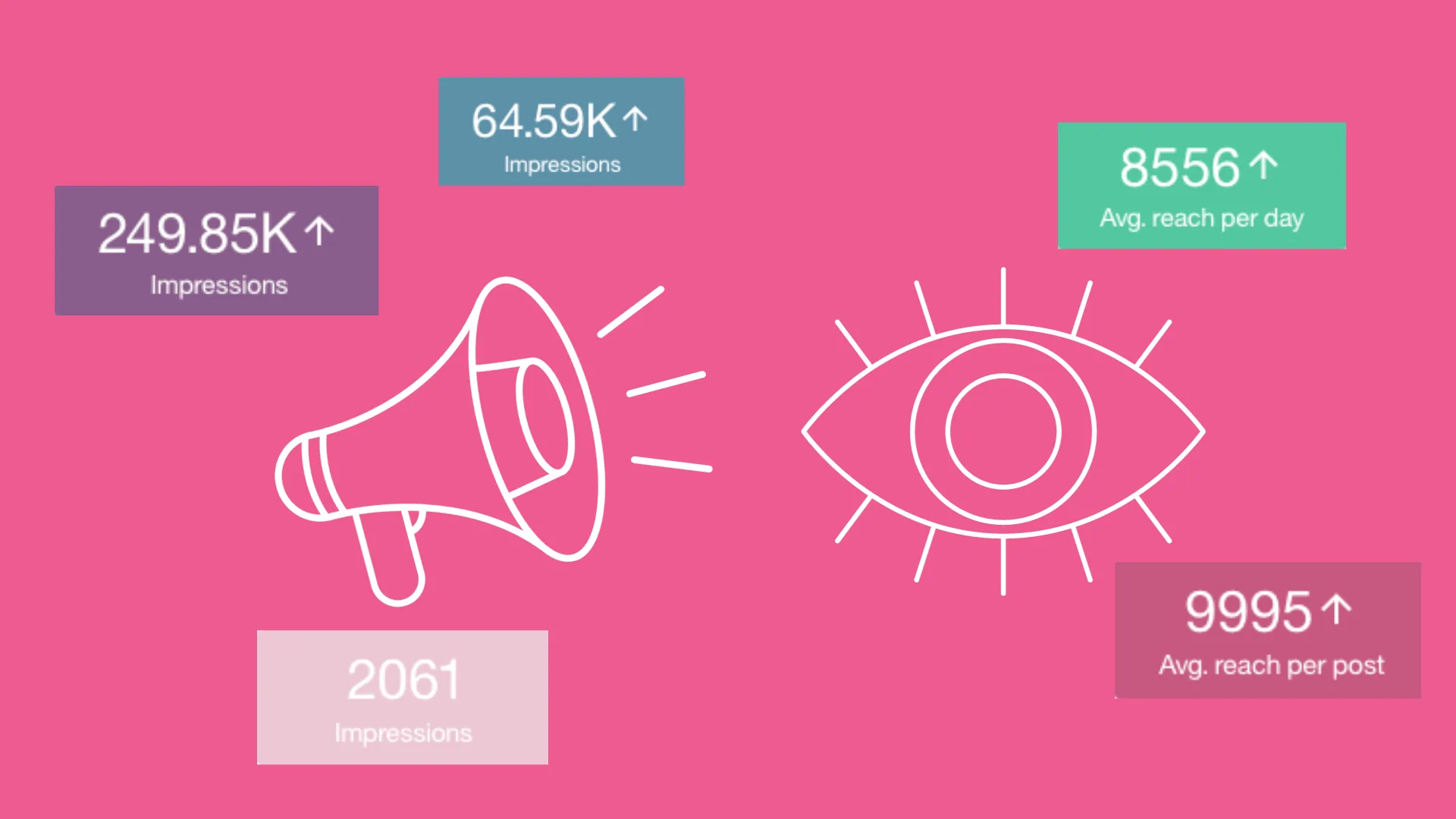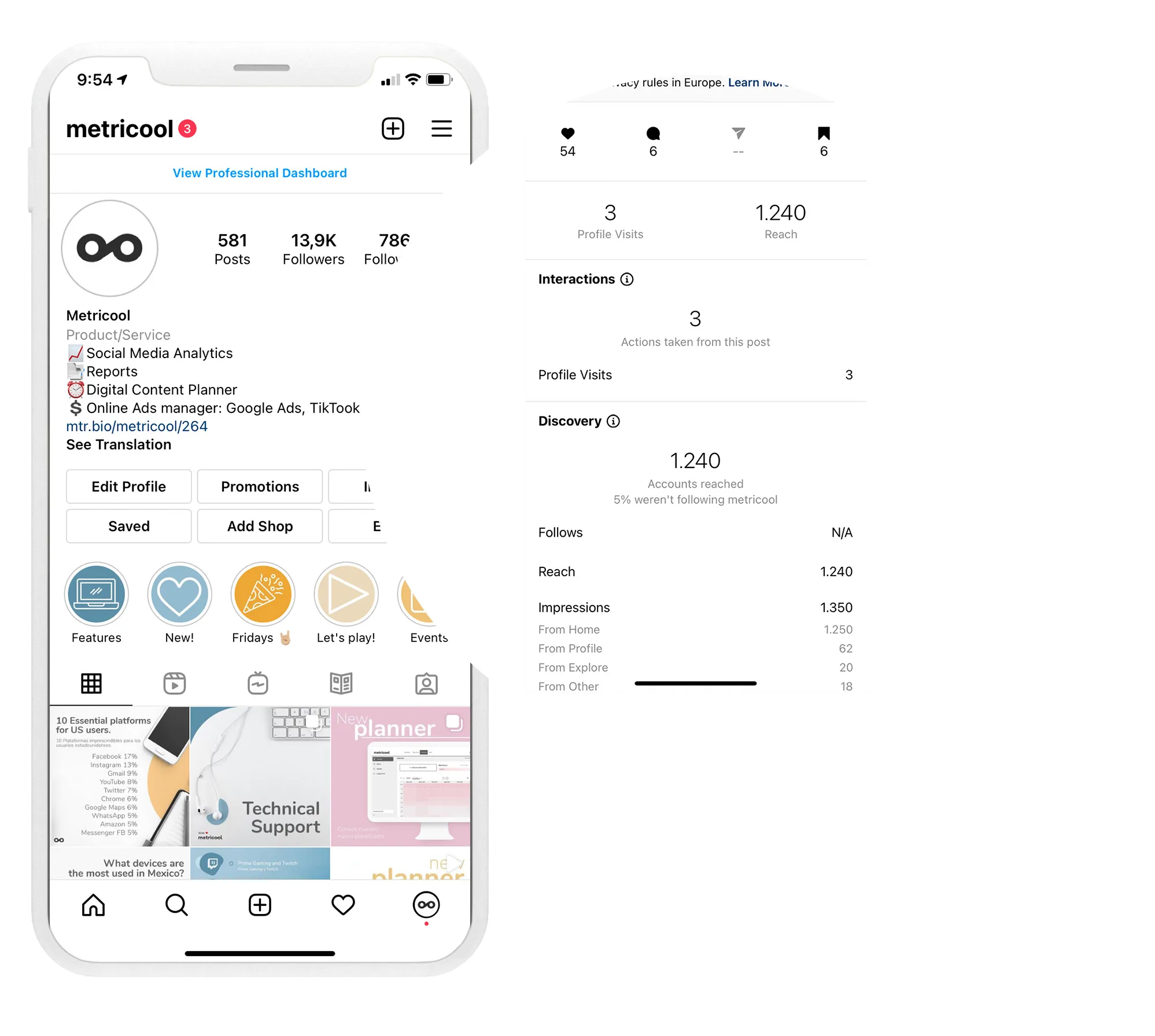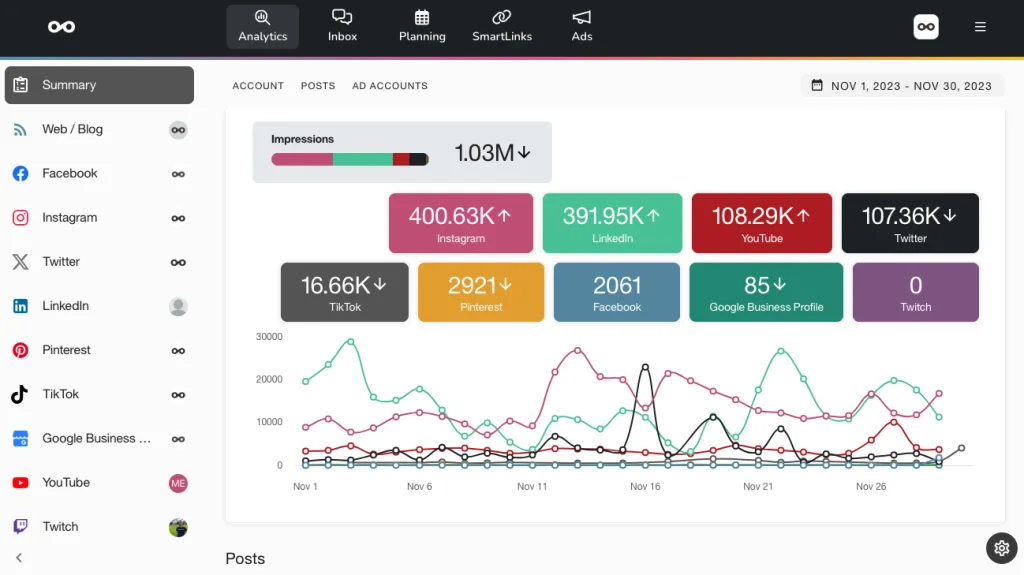What is the Difference Between Reach and Impressions?

Social media analytics can be extremely useful in understanding how your content is performing. However, that is, if you understand what these metrics mean. You’re probably familiar with the basic engagement metrics including likes, comments, shares, saves, and reposts… but what about ones like reach and impressions?
With the expansion of algorithms, engagement options, and ways to share content, there is almost unlimited data. This can become overwhelming when it comes to deciding which metrics are most important and will help measure your brand’s goals.
However, today we will be diving into two metrics that will allow you to see the visibility of your content, reach, and impressions.
Reach vs. Impressions on Social Media
These two data points are similar, and both refer to how many people are viewing your content.
But to not confuse the two, these points are important to differentiate when it comes to refining and improving our social media marketing strategy.
So, what is the difference in reach vs. impressions?
➡️ Reach refers to how many users saw your content appear on their feeds.
➡️ Impressions measure how many times your content was viewed.
Reach
Reach refers to the total number of unique people who have seen your post, not accounting for multiple views or if they engaged with your content. You can view this metric for individual content on social media, as an average of your reach per post, or the overall reach of your page, campaign, or account.
Ideally, all your followers would see your content on the multiple social networks you manage. If you have a community of 20,000 followers, you have 20,000 views. However, this is never the case since social networks’ algorithms determine who sees the post. Also, a user may not have been connected on the day when the post was published.
Impressions
Impressions also measure how many times your content has been viewed, including multiple visits from individual users. So whereas reach calculates how many people your content reached, impressions show how many overall views your content received.
This again can be determined per post, as an average metric, or as an overall number of impressions across your page.
Even if you have 1,000 followers on your profile, you can obtain 3,000 impressions because users may have seen the same content more than once.
💡 Reach vs Impressions
The difference is simple, reach is the number of unique users who see your content
and impressions the number of times they see it.
Why are my impressions higher than reach?
If you notice that your impressions are higher than your reach, this most likely means people come back to visit your content multiple times, which is great! This reveals that your post resonated with your audience, and it created enough value for them to look at it again. Therefore, you can analyze the content and if you can replicate these strategies in your next content pieces.
Reach vs. Impressions: Which One Is More Important?
So, is there a metric that is better than the other? Well, this depends on your brand’s social media goals. On one hand, reach helps you understand which content was seen by a larger number of people. On the other hand, impressions may tell you that content was memorable among viewers.
By analyzing reach and impressions across each platform, you can compare metrics to see which content is performing best in terms of exposure.
Reach vs. Impressions by Social Network
On Facebook, reach is divided into three different categories.
➡️ Organic Reach: This metric represents the total number of people who have seen your post organically or, in other words, free, without having made any ads.
➡️ Paid Reach: It is the number of users who have seen your paid content for an advertising campaign on Facebook.
➡️ Viral Reach: Unique people who have seen your content through friends or other users when they ‘like’ or ‘share’ your post.
Impressions are the number of times a post on your page has been displayed on the users’ wall. We can also find:
➡️ Organic Impressions: Your content has been displayed for free.
➡️ Paid impressions: The number of times a promoted post with Facebook Ads has been shown to other users.
➡️ Viral Impressions: The number of times a post has been displayed because it has been shared by other users on their wall.
X (Twitter)
Twitter does not provide information on the reach of your Tweets. Click on one of your posts to realize that the first metric is about impressions.
In this case, for Twitter, impressions refer to the number of people who have seen your posts. In other words, for each user who sees your tweet, you get a new impression.
On Instagram, as on the rest of social networks, the reach and impressions are different.

➡️ Reach
The number of unique Instagram profiles who have seen the posts you have made: feed posts, Reels, videos and Stories.
➡️ Impressions
The number of times an Instagram user sees your content: feed posts, Reels, videos and Stories.
Track Reach and Impressions with Metricool
Do you want to view your reach and impressions for all your social media content? Well, with Metricool you can see this data and more.
Reach metrics with Metricool
Within Metricool you can track reach in a few different ways, across multiple platforms. View reach metrics for the following content and platforms:
✅ Facebook: Average reach per post, average reach per reel, and reach for individual content.
✅ Instagram: Average reach per post, average reach per reel, average reach per story, and organic and paid reach for individual content.
✅ TikTok: Average reach per post and reach for individual content.
✅ Google Business Profile: Reach distribution by source
✅ Facebook Ads: Account reach, reach per campaign.
Impressions metrics with Metricool
✅ Brand summary: Overall impressions for each connected social media.

✅ Facebook: Page impressions, posts in period impressions, and organic vs. promoted post impressions.
✅ Instagram: Profile impressions, posts impressions, post impressions organic vs. promoted, hashtags impressions, Stories impressions.
✅ X (Twitter): Impressions of all posts in the period, post impressions organic vs. promoted, impressions per post.
✅ LinkedIn: Page impressions, average impressions per post, daily impressions, post impressions.
✅ Pinterest: Period impressions, pin impressions.
✅ YouTube: Impressions per video.
✅ Facebook Ads: Account impressions, campaign impressions.
✅ Google Ads: Account impressions, campaign impressions, keyword impressions.
✅ TikTok Ads: Account impressions, campaign impressions.
You can view all this data for completely FREE, by creating your Metricool account. View all your social media analytics in the same place, manage your social media accounts, and save time in planning and scheduling your content.

